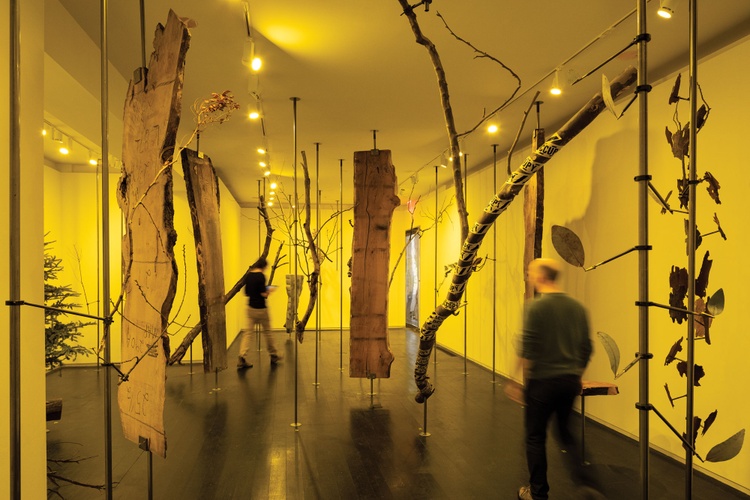A
AIA CES Credits
AV Office
321M Fayerweather Hall
Abstract Publication
415 Avery Hall
Academic Affairs
400 Avery Hall
Academic Calendar, Columbia University
Academic Calendar, GSAPP
Admissions Office
407 Avery Hall
1172 Amsterdam Avenue
New York, New York 10027
Advanced Standing Waiver Form
Must be printed and returned to 400 Avery Hall
Alumni Board
Alumni Office
405 Avery Hall
1172 Amsterdam Avenue
New York, New York 10027
Architecture Studio Lottery
Assistantships
Avery Library
300 Avery Hall
1172 Amsterdam Avenue
New York, NY 10027
Avery Review
Avery Shorts
B
Black Student Alliance at Columbia GSAPP
Building Science & Technology Waivers
Bulletin Archive
C
Career Services
300M Avery Hall
Columbia Books on Architecture and the City
Commencement
Communications Office
415 Avery Hall
Conversations podcast
Counseling and Psychological Services
Courses
Credentials Verification
Credit Transfer
Cross Registration
D
Dean’s Letter
Dean’s Office
402 Avery Hall
1172 Amsterdam Avenue
New York, NY 10027
Development Office
404 Avery Hall
Directory of Classes (All Columbia University)
Disability Services
Dodge Fitness Center
3030 Broadway Dodge
Dual Degree Program Requirements
E
End of Year Show
Events Office
415 Avery Hall
External Funding Sources
F
Faculty Directory
Feedback
Finance Office
406 Avery Hall
Fitch Colloquium
Future Anterior Journal
G
GSAPP Community Fellowship Program
GSAPP Emergency Fund
GSAPPX+
Grades
Graduation
Graphics Project
H
Honor System
Human Resources
Hybrid Pedagogy Resources
I
IT Helpdesk Ticket, GSAPP
IT Office, GSAPP
IT, Columbia University (CUIT)
Identity
Incubator Prize
International Students and Scholars Office (ISSO)
N
News and Press Releases
Newsletter Sign Up
Non-Discrimination Statement and Policy
O
Onera Prize for Historic Preservation
Online Admissions Application
GSAPP Admissions 407 Avery Hall
Output Shop
116 Avery Hall
1172 Amsterdam Avenue
New York, NY 10027
Ownership of Student Work Policy
P
Paris Prize, Buell Center
Paul S. Byard Memorial Lecture Series
Percival & Naomi Goodman Fellowship
Plagiarism Policy
Policies & Resources
Press Releases
Publications Office
415 Avery Hall
1172 Amsterdam Avenue
New York, New York 10027
R
Registration
Registration: Add / Drop Form
Room Reservations
S
STEM Designation
Satisfactory Academic Progress
Scholarships
Skill Trails
Student Affairs
400 Avery Hall
Student Awards
Student Conduct
Student Council (All Programs)
Student Financial Services
Student Health Services at Columbia
Student Organization Handbook
Student Organizations
Student Services Center
205 Kent Hall
Student Services Online (SSOL)
Student Work Online
Studio Culture Policy
Studio Procedures
Summer Workshops
Support GSAPP
Arthur Ross Architecture Gallery
MISSION
Founded in 1990, the Arthur Ross Architecture Gallery produces original exhibitions that explore new architectural practices, research, and ideas. Through its collaborations with architects and artists, historical investigations, and public programs the gallery fosters creative projects and scholarly inquiries that enrich and expand GSAPP’s culture of experimentation and critical thinking. All exhibitions and programs at Ross Gallery, located in Buell Hall on the Columbia University campus, are free and open to the public.
ON VIEW
Prospecting Ocean by Armin Linke, is a multimedia artistic research project that investigates the technocratic entanglement of industry, science, politics, and economics at the frontiers of ocean exploration. The exhibition features Linke’s archival research, photography, and films, including behind-the-scenes footage at leading oceanographic research institutions and at sea. Prospecting Ocean is on view from February 27 through June 27, 2025. It is Linke’s first solo exhibition in the U.S. in more than 20 years.
HISTORY
Located in Buell Hall on Columbia’s Morningside campus, Ross Gallery opened in Spring 1990. Envisioned by Bernard Tschumi, then dean of GSAPP, as New York City’s first public exhibition space focused exclusively on architecture, the gallery launched with “The Filter of Reason: Work of Paul Nelson,” a show curated by Terence Riley, Joseph Abram, and Kenneth Frampton. In a New York Times review, the critic Paul Goldberger observed that the inaugural exhibition marked “a promising beginning for this handsome new architecture gallery at Columbia, which the school hopes will become a focal point for the city’s architectural community.”
Since then, Ross Gallery has continued to present exhibitions that cast new light on both historical and contemporary figures and issues, contributing to architectural culture and discourse both locally and globally. As the gallery’s first curator, Terence Riley’s exhibitions included monographic shows on Iakov Chernikhov (1990-91) and Kazuo Shinohara (1991), as well as a groundbreaking historical study of the Museum of Modern Art’s landmark 1932 exhibition “Modern Architecture: International Style.” In 1992 Joseph Rosa began his three-year tenure as curator with an exhibition of recent watercolors by Lauretta Vinciarelli (1992). Historical shows on modernist architects, such as Albert Frey (1993) and Morris Lapidus (1994), followed, in addition to a presentation of work by Wiel Arets, Ben van Berkel, Mecanoo, and other emerging Dutch architects in “Modernism without Dogma: Architects of a Younger Generation in the Netherlands” (1993). Between 1995 and 2004, Evan Douglis expanded the gallery’s curatorial scope to encompass both architecture and design, staging exhibitions on protagonists that included Eileen Gray (1996), Alvaro Siza (1997), Gaetano Pesce (1999), and Jean Prouve (2002; 2003-4). Under the direction of Mark Wasiuta from 2004 until 2016, the gallery offered a platform for rigorous scholarly research on understudied postwar projects, fueling an innovative program of archival exhibitions—notably, “Environmental Communications: Contact High” (2014), “Information Fall-Out: Buckminster Fuller’s World Game” (2015), and “Les Levine: Bio-Tech Rehearsals, 1967-1973” (2016). In 2016 Irene Sunwoo became curator of Ross Gallery, and currently steers an experimental exhibition program committed to supporting and collaborating with architects and artists through new research and design projects. Her exhibitions have engaged the work of Arakawa and Madeline Gins, Cooking Sections, Torkwase Dyson, Frida Escobedo, Andrés Jaque, Norman Kelley, Armin Linke, and Liam Young, among others.
See also Columbia GSAPP exhibitions in all locations.
Recent News














